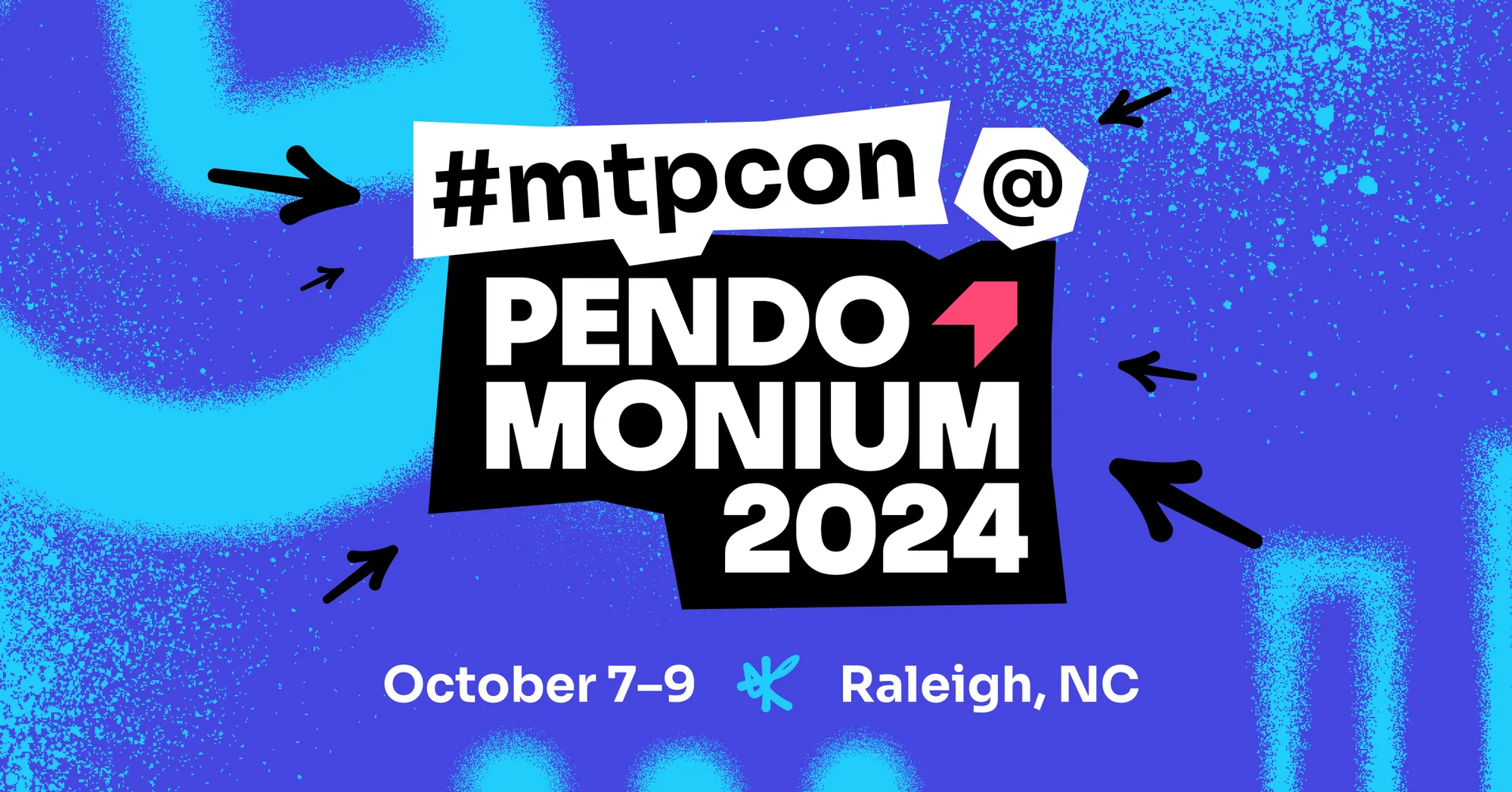Over the past two days, we at Pendo have been hard at work putting on our first-ever virtual conference. Normally, Pendomonium draws hundreds of Pendo users to our HQ in Raleigh, NC, but in light of the pandemic, the team decided to hold the event remotely.
Normally, Pendo users make up the majority of Pendomonium attendees. However, the virtual event made it possible for a wider audience to take part and discover best practices related not only to Pendo but to product management in general. Nearly 3,000 attendees joined the event, hearing from incredible speakers like NBA great Kareem Abdul-Jabbar, Blue Apron CEO Linda Kozlowski, and award-winning documentary filmmaker Nina Krstic.
On both the main speaker “stage” and in 26 separate virtual breakout sessions, we saw a number of product-focused themes emerge. Of the many, we found the following four to be the most compelling and are looking forward to seeing how they affect product management this year and into the near future.
The impact of COVID-19 on software products and beyond
Unsurprisingly, a major theme of the event was the wide-ranging effects of COVID-19. The Pendo team was uniquely positioned to investigate these changes, particularly those impacting software, through product usage analytics. They’ve found that while some industries are struggling, others are thriving. And both situations are highly challenging for product managers.
In his opening remarks, Pendo CEO Todd Olson mentioned e-learning platform Coursera as an example. Suddenly, the product team found themselves managing a huge influx of new users and rushing to onboard them. On the other hand, restaurant point-of-sale software provider Toast had to quickly adapt to a world in which in-person dining was off-limits. Both software platforms managed to not only survive but thrive in the normal by rewriting their product playbooks.
During her mainstage session, Blue Apron CEO Linda Kozlowski shared that specific aspects of their meal kit products quickly became extremely important. The standards that made them a market leader (sanitation, animal welfare, etc.) were suddenly huge differentiators. As demand exploded, the Blue Apron product team gathered user feedback to figure out how best to simplify meal options and get them out the door.
Since COVID-19 is likely to be with us for a while longer, the lessons learned now will continue to be useful well into 2021.
“A-ha” moments
In product management, the “a-ha moment” refers to the point in time when the user realizes the value of the product. These moments are coveted because reaching them makes a customer less likely to churn and more likely to continue engaging with the product on a regular basis. Many software onboarding processes are designed to get users to these “a-ha” moments as quickly as possible.
During his opening remarks, CEO Todd Olson announced Pendo’s new “core events” functionality, which allows customers to flag these a-ha moments in their application. And Blue Apron CEO Linda Kozlowski discussed how they analyzed a rich array of user data to uncover their “a-ha moments” and even identify underserved markets such as singles living alone and empty nesters.
But “a-ha moments” exist beyond the PM and software worlds. During his 1:1 conversation with Todd Olson, NBA legend Kareem Abdul-Jabbar shared that the murder of Emmett Till was an a-ha moment that drove him to social activism. And after the Birmingham murders, Kareem saw people pointing out the stupidity and pointlessness of racism and decided to not let it poison his outlook on life.
The intersection of digital and physical customer experiences
Digital data is only one piece of the user journey puzzle. The rest lies in the real world. Recently, more and more PMs are considering this 360-degree view of the customer.
Blue Apron CEO Linda Kozlowski discussed this topic at length during her talk. The Blue Apron team recognized the physical aspect of their product (the meal kit itself and its ingredients) is what people bought it for, and the digital product needed to enable changes to the physical one.
Also, Blue Apron invests heavily in detailed customer segmentation. They combine psychographics and demographics with digital usage analytics and in-person behaviors. Segments include Aspirers, Avoiders, Traditionalists, and Enthusiasts, along with numerous additional personas. They’ve implemented a robust voice of the customer program as well. “We have a Voice of Customer program that looks at every single touchpoint across the business. It gathers data from consumer insights, customer support, and our partners,” said Linda, “It pulls them together to say, ‘What are the most impactful changes you can make the product?’”
Product engagement and user emotions
For quite some time, NPS has been the user satisfaction metric of choice. Now, however, the Pendo team is sharing another option: PES, or product engagement score. After all, engaged customers tend to be happy customers. We’ve written quite a bit on how to calculate your own PES and use it to make product decisions. It may or may not end up being “the new NPS,” but it’s certainly a helpful tool in any PM’s arsenal.
Measuring user emotions is tricky in any case. However, product teams often have some idea of the feelings they want their product to trigger in their users. As the saying goes, “People may forget what your product does, but they’ll never forget how it made them feel.” This is an area where the principles of game design can be really powerful. Rahul Vohra, founder and CEO of cutting-edge email tool Superhuman, gave an insightful session on this topic. He shared eleven game design principles that business software PMs can build into their products to create a more engaging, immersive — and yes, fun — user experience that keeps customers coming back.
Thank you again to everyone who attended the Pendomonium Virtual conference. We hope you enjoyed it as much as we did. We’ll see you — with any luck, in person! — next year.




